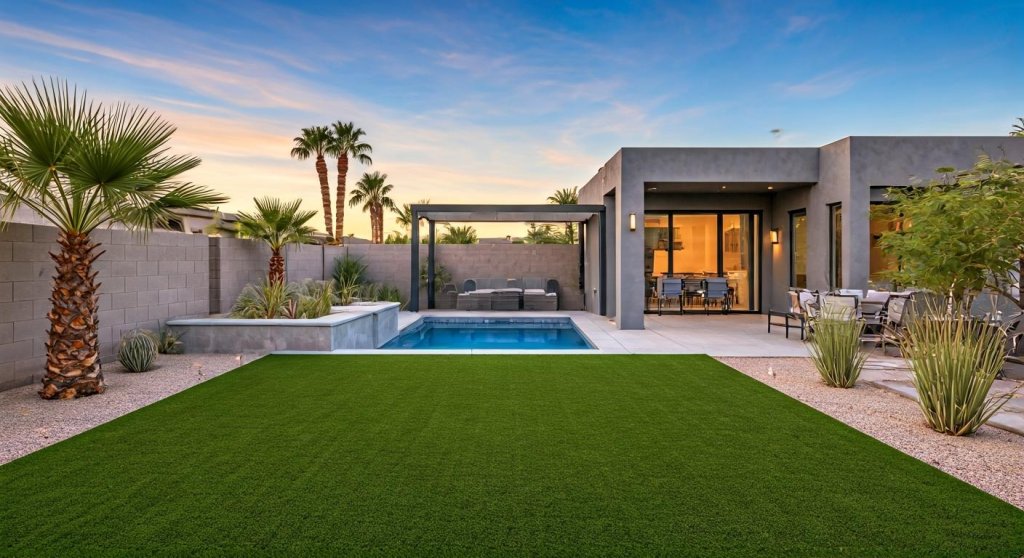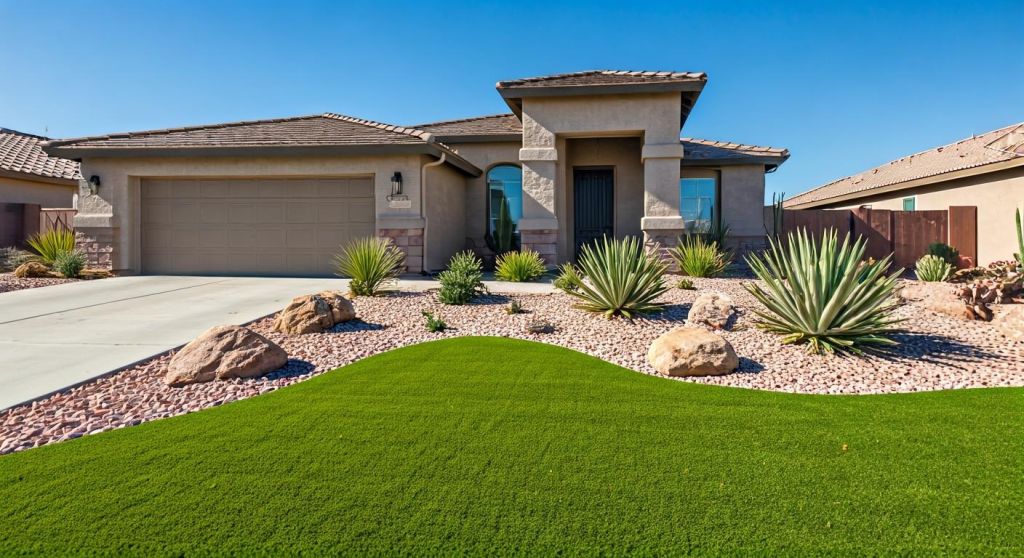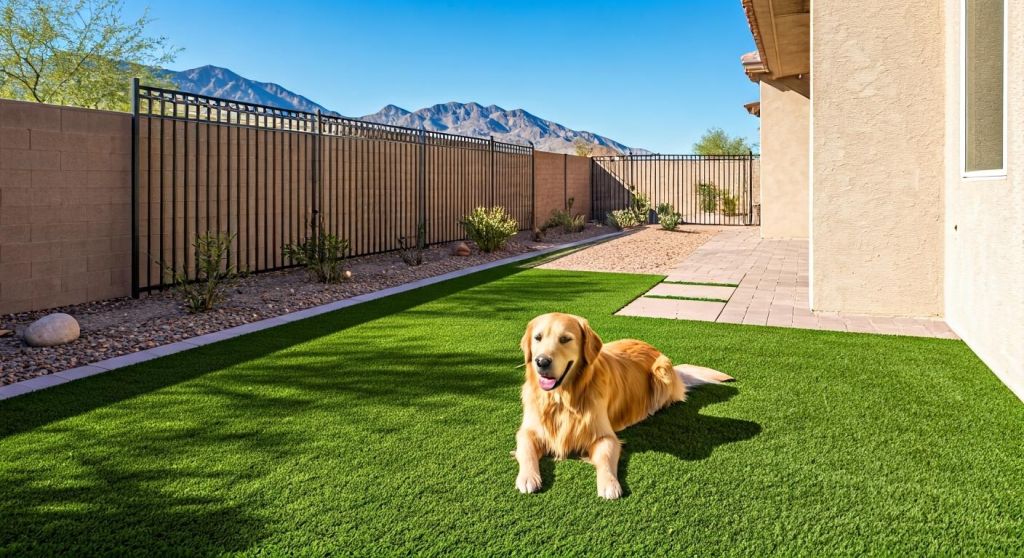Assess Your Current Turf and Soil Health
When it comes to transforming your yard, the first step you shouldnt overlook is assessing your current turf and soil health. Quality Artificial Grass Vegas Nevada. Seriously, it's like laying the foundation for a house. If the base isnt right, nothing else will be! Many homeowners think they can just throw some grass seed down and call it a day, but that's just not how it works.
You really need to dig deep (literally!) and get a sense of what youre working with. Check the soil quality-its often not as good as you might think. If your soil's too compacted, it won't allow water or nutrients to reach the roots, which means your grass will struggle. You might even find that the pH levels are off, which can make it hard for grass to thrive.
And let's not forget about the turf itself. Is it patchy, brown, or just plain sad-looking? It doesn't have to be that way! You might find that some areas need more sunlight, while others could use a little shade. Identifying these spots can help you decide which turf revamp ideas will work best for your yard's unique challenges.
So, before you rush into any fancy landscaping ideas, take a moment to really assess whats going on beneath the surface. It's one of those steps that can make a world of difference in the long run! Your yard could be transformed into a lush, green oasis, but only if you start with a solid understanding of your turf and soil health. Don't skip this crucial step-you won't regret it!
Choose the Right Turfgrass Variety for Your Needs
Choosing the right turfgrass variety for your needs is super important when you wanna transform your yard into a lush green paradise! It's not just about picking the prettiest grass; you gotta think about your climate, how much sun your lawn gets, and how much wear and tear it'll face.
For instance, if you live in a hot area, warm-season grasses like Bermuda or Zoysia might be your best bet. They thrive when the suns blazing and can handle a bit of foot traffic. On the flip side, if you're in a cooler region, cool-season options like Kentucky Bluegrass or Tall Fescue are likely gonna work better for you. They love the cooler temps and can stay green longer in the spring and fall.
Dont forget about maintenance, too! Some grasses require more watering and mowing than others. If you've got a busy schedule, you might not want something that demands constant attention. You'll want to select a variety that fits your lifestyle.
Also, think about what you want your yard for. If you're planning to host barbecues or let the kids run around, a durable grass that can handle some traffic is key. But if you just want a pretty lawn to look at, then maybe go for a fine-textured variety that looks great but isn't as tough.

In conclusion, take your time to research and find the turfgrass that'll suit your needs. It's not just about aesthetics, but about creating a space that works for your lifestyle and the environment you live in. With the right grass, your yard can be the envy of the neighborhood!
Prepare the Soil for Optimal Growth
Alright, so you wanna transform your yard into a lush paradise, eh? Well, the first thing you gotta do is prepare the soil for optimal growth! I mean, you cant just throw down some grass seeds and expect a miracle, right? No way! First off, you gotta get rid of any weeds or debris thats cluttering up your space. Trust me, a clean slate is key.
Now, dont skip the step where you test your soil! Yeah, it might sound a bit sciency, but knowing what pH level and nutrients your soil is lacking is super important. Maybe you need to add some compost or maybe your soil is too acidic and needs some lime. Its all about finding that sweet spot!
Oh, and dont forget to mix things up! If your soil is too compact, your plants wont have enough air and water to grow properly. So, grab a rake or a tiller and break up that soil. Its like giving your garden a spa day!
Lastly, if youre thinking about adding some raised beds, its definitely worth considering. They can be a game-changer, especially if your soil isnt the greatest. Plus, you get the added benefit of not having to kneel down all the time to tend to your plants. Score!
So, there you have it! Some tips to get your garden ready for some serious growth. Happy gardening!
Seeding vs. Sodding: Weighing the Options
Transforming your yard can be an exciting project! When it comes to creating that lush, green lawn, two popular methods often come up: seeding and sodding.
Transform Your Yard with These Turf Revamp Ideas - Las Vegas School Turf Installation
- Affordable Synthetic Grass Las Vegas
- Landscaping With Artificial Grass Las Vegas
- Paver And Turf Combo Las Vegas

First off, let's talk about seeding. This method involves spreading grass seeds over the soil. It's generally less expensive than sodding, which is a big plus if you're on a tight budget. Plus, you've got a wider variety of grass types to choose from. However, it does take time for the seeds to germinate and establish themselves, which means you might have to deal with some bare patches for a while. Patience is key here! Also, you can't neglect watering; if it gets too dry, those little seeds won't stand a chance.
On the flip side, sodding offers an instant solution. You get that beautiful, green lawn right away, which is fantastic if you're looking to enjoy your yard immediately (who wouldn't want that?). But, here's the catch: it can be quite a bit pricier. You're paying for the convenience of not having to wait. Also, if you don't install it properly, you could end up with seams that can be unsightly and might even lead to weed issues down the road. Not ideal, right?
In conclusion, whether you choose seeding or sodding really depends on your needs, budget, and how much time you're willing to invest. Seeding might take longer and require more care, but it's cost-effective and offers variety. Sodding, while more expensive, gives you that instant gratification. So, weigh your options carefully, and transform your yard into the oasis you've always wanted!
Proper Watering and Fertilization Techniques
Transforming your yard into a lush, vibrant space doesnt have to be a daunting task. One of the keys to achieving this transformation is getting the proper watering and fertilization techniques down. You wouldnt believe how much a difference these methods can make!
First off, when it comes to watering, its important to water deeply but infrequently. This might sound counterintuitive, but it helps encourage deeper root growth which makes your grass more resilient. Dont just sprinkle a little bit every day; give your grass a good soaking once or twice a week. This way, the water penetrates the soil and reaches the roots where its needed most.
Avoid watering in the middle of the day when the sun is at its hottest. This not only wastes water but also leads to more evaporation and can stress your plants. Early morning or late evening are ideal times for watering. Plus, dew can help reduce the water you need to use.
Fertilization, on the other hand, should be done judiciously. Over-fertilizing can harm your grass and pollute your local waterways. Use a slow-release fertilizer to provide nutrients gradually throughout the season. And remember, not all grass types need the same amount of fertilizer. Check with a local nursery or do some research to find out whats best for your specific type of grass.

Neglecting to water properly or fertilizing excessively can lead to a yard thats not only brown and patchy but also prone to pests and diseases. So, take the time to get these basics right. Your hard work will pay off in a yard thats the envy of the neighborhood!
And hey, dont forget to enjoy the process too! Gardening isnt just about the end result; its about the journey.
Mowing Best Practices for a Healthy Lawn
Mowing best practices for a healthy lawn are super important! You know, if you dont mow correctly, your grass can get all patchy and unhealthy. First off, never cut more than a third of the blade at one time. Thats a big no-no! It stresses the grass out too much. Also, make sure to keep your mower blades sharp. Dull blades tear the grass instead of cutting it cleanly, which can lead to brown spots.
Another thing is to vary your mowing pattern each time you go around. This prevents soil compaction and helps the grass grow evenly in all directions. Dont forget to mow often enough so that your grass doesnt get too tall between cuts. Taller grass shades out the lower part, making it weak and prone to diseases.
Lastly, try not to mow when the grass is wet! Wet grass clippings can mat down on the lawn, blocking sunlight and air circulation. And speaking of clippings, leave em on the lawn if possible. They act as a natural mulch, adding nutrients back to the soil and helping retain moisture.
So yeah, there you have it. A few tips to keep your lawn looking lush and green without breaking the bank!
Dealing with Common Turf Pests and Diseases
Dealing with Common Turf Pests and Diseases can be a real hassle, especially when youre trying to transform your yard into a lush, green oasis! Sure, you might think youve got everything under control, but those pesky weeds and stubborn fungi can really throw a wrench in your plans. Trust me, Ive been there, done that, and it aint pretty.
First off, lets talk about pests. Grubs are a major pain in the ass, especially if youve got a new lawn.
Transform Your Yard with These Turf Revamp Ideas - Artificial Putting Greens Las Vegas
- Artificial Putting Greens Las Vegas
- Las Vegas School Turf Installation
- Las Vegas Turf For Front Yards
Now, onto diseases. Fungal infections like dollar spot and brown patch can make your grass look like its been attacked by aliens. Ugh. One things for sure - you dont want to see those brown rings spreading across your lawn. To fight back, make sure your grass isnt staying wet for too long.
Transform Your Yard with These Turf Revamp Ideas - Artificial Putting Greens Las Vegas
- Artificial Grass For Sports Fields Las Vegas
- Custom Turf Design Las Vegas
- Las Vegas Artificial Turf For Decks
Speaking of mowing, did you know that cutting your grass too short can actually make it more susceptible to pests and diseases? It might seem counterintuitive, but taller grass can act as a natural buffer, protecting the roots from harsh conditions and pests. So next time youre reaching for that super-low setting on your mower, think twice.
And lets not forget about weeds. Theyre like the bullies of the plant world, stealing nutrients and water from your grass. But fear not, there are ways to fight back. Mulching mowers can be a game-changer. They chop up grass clippings into tiny pieces and leave them on the lawn, where they break down into natural mulch. This not only helps smother weeds but also adds nutrients back into the soil.
Lastly, dont neglect the power of a good lawn care routine. Regular aeration, overseeding, and fertilizing can do wonders for your turf. Its like giving your grass a spa day, but instead of facials, it gets improved air circulation, new seeds to fill in bare spots, and the right nutrients to grow strong and healthy.
So there you have it. Dealing with pests and diseases doesnt have to be a losing battle. With a little know-how and some patience, you can transform your yard into the green haven youve always dreamed of, without the stress of constant battles against nature!
Maintaining Your Revamped Turf for Years to Come
Maintaining Your Revamped Turf for Years to Come
So, you've finally decided to revamp your yard with some gorgeous turf, huh? That's awesome! But just like with anything else, it doesnt stop at installation. You gotta think about how to keep that beautiful green looking fresh and vibrant for years to come. Let's dive into some tips that'll help you do just that!
First off, watering is super important. You might think “Oh, it's just grass, it'll survive on its own,” but that's not true! Turf needs a regular watering schedule, especially during those hot summer months. Early morning is usually the best time to water. This way, the grass can soak up all the moisture before the sun gets too harsh. And dont forget to adjust your watering based on rainfall-overwatering can be just as damaging as not watering enough!
Next, lets talk about mowing. You might think mowing is just a chore, but it actually plays a crucial role in maintaining your turf's health. Keep your mower blades sharp (trust me, dull blades can tear the grass instead of cutting it cleanly). Aim to mow when the grass is dry, and don't cut it too short! A good rule of thumb is to never remove more than one-third of the grass height at once. This helps keep the turf strong and resilient.
Now, pests can be a real pain, can't they? Fortunately, there are ways to manage them without using harsh chemicals. Regularly inspecting your turf for signs of pests or disease can help catch problems early. If you notice anything odd, try some natural remedies before resorting to chemicals. After all, you want your yard to be a safe haven for kids and pets!
Another thing to consider is aeration. You might be thinking, “What's that?” Well, aeration involves perforating the soil with holes to allow air, water, and nutrients to penetrate deeper. This is especially important in high-traffic areas where the soil can become compacted. Aerating your turf every year or so can really make a difference in its overall health and durability.
Lastly, let's not forget about fertilization. Your turf needs nutrients to thrive, but over-fertilizing can lead to problems, too. It's best to do a soil test to see what your turf actually needs. Then, you can choose a fertilizer that suits those needs. A good fertilization schedule can keep your turf lush and green, just the way you like it!
In conclusion, maintaining your revamped turf doesn't have to be a daunting task. With a little care and attention, you can enjoy a beautiful yard that lasts for years. So, grab your watering can and mower, and let's keep that turf looking fabulous!



